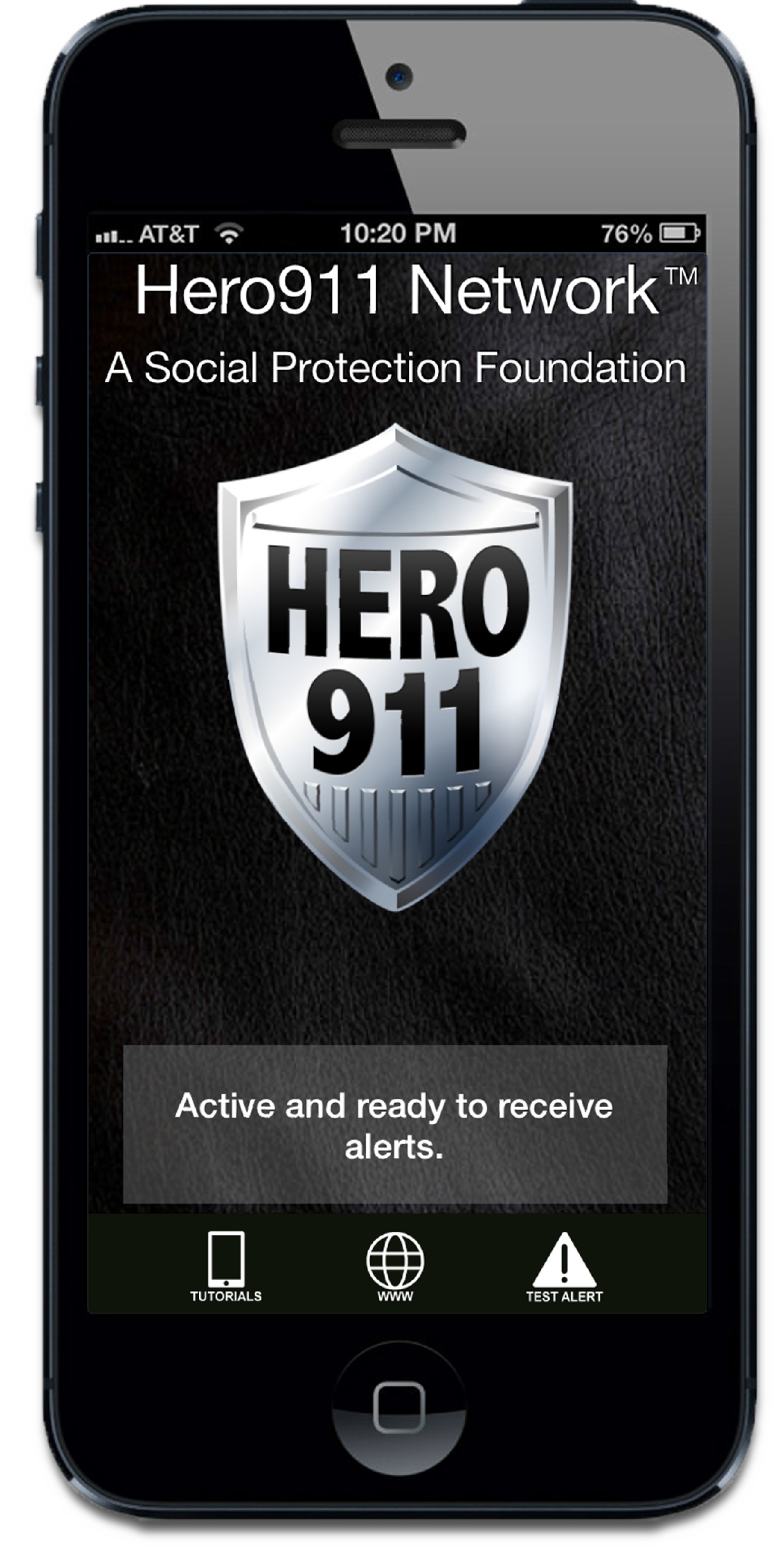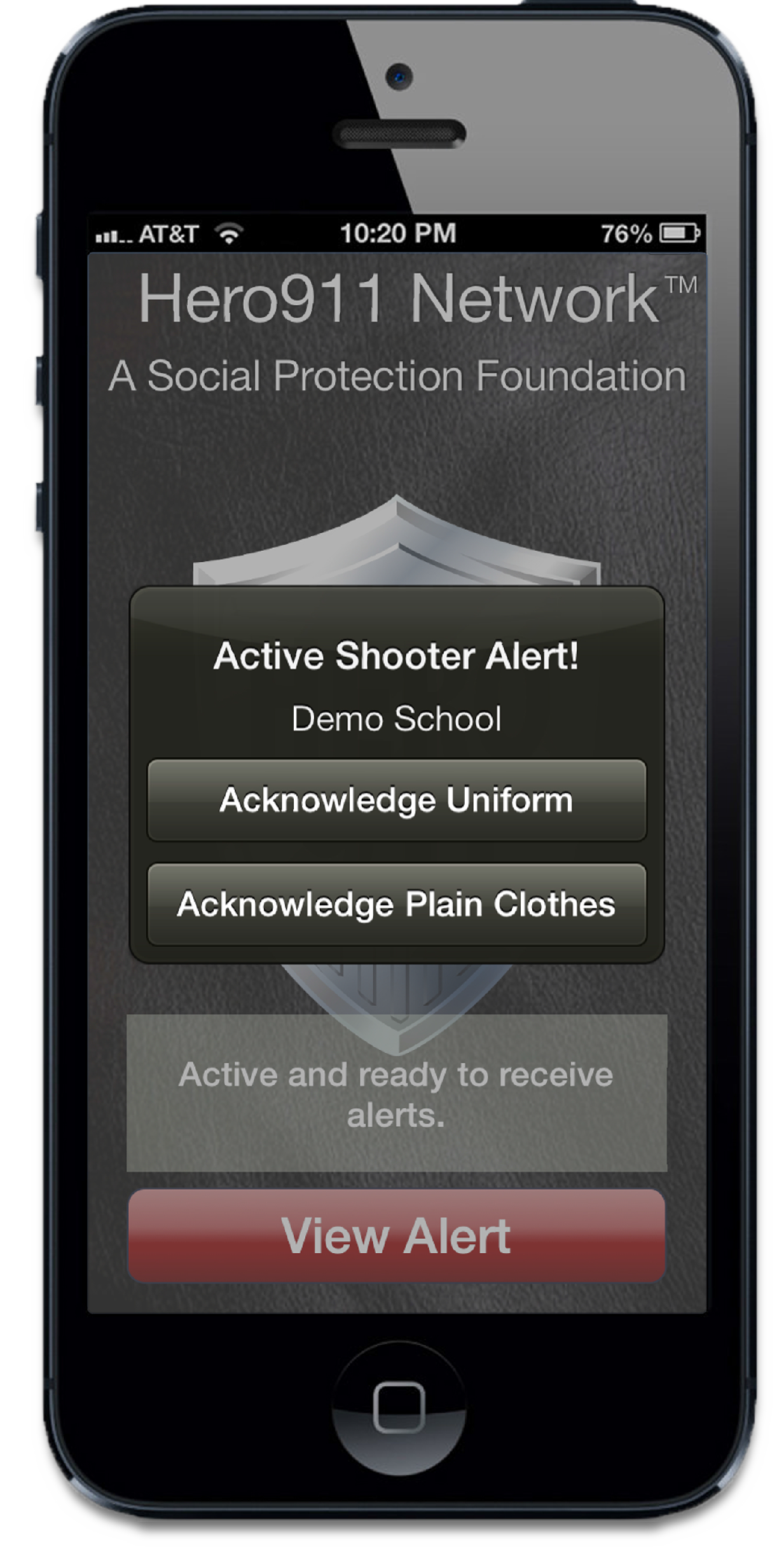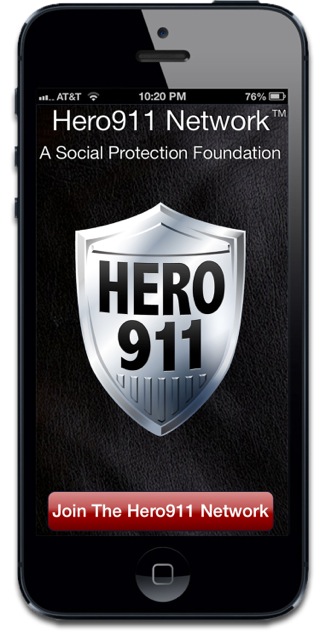When Seconds Count: Free App Alerts for On and Off Duty Officers of Active School Shootings
 These days there seems to be an app for just about everything: an app that can tell you what stores to shop in to receive the biggest discounts; an app that will let you record to your favorite TV show at home while you are stuck in traffic; and an app that will send a taxi to your exact location. As a society we have gotten accustomed to using technology to keep us even more informed, and more connected. Many times these apps are trivial, and often superfluous. However, this month there is a roll-out of an app that is unlike all other apps. When seconds count, this app can save lives.
These days there seems to be an app for just about everything: an app that can tell you what stores to shop in to receive the biggest discounts; an app that will let you record to your favorite TV show at home while you are stuck in traffic; and an app that will send a taxi to your exact location. As a society we have gotten accustomed to using technology to keep us even more informed, and more connected. Many times these apps are trivial, and often superfluous. However, this month there is a roll-out of an app that is unlike all other apps. When seconds count, this app can save lives.
The Hero Network is a volunteer, nonprofit group of federal, state, and local law enforcement officers who work at reducing response times to active school shooting incidents. The Hero911 app is designed to increase the number of officers, on or off duty, who can respond when these crises are occurring and save as many lives as possible.
In order to understand more about the Hero Network and how the Hero911 app works, I sat down with Michael Snyder, president of the Hero911 Network and retired colonel of the Illinois State Police, to ask him some questions about this groundbreaking technology.
CP Dispatch: What is the Hero911 Network?
Mr. Snyder: The Hero911 Network is a volunteer group of active and certified retired officers who download the Hero911 phone app. Free, yet restricted to law enforcement officers, the app sends an instant alert to on and off duty officers that are within a 10–20 mile radius of an active school shooting. The system—developed by a team of law enforcement officers and technology experts in Illinois—is simple and effective.
CP Dispatch: How does the Hero911 Network and the app work?
Mr. Snyder: The Hero911 app will work together with the Hero 911 Network’s companion app for teachers and school administration called “SchoolGuard.” Schools procure a service called SchoolGuard that places a panic button in the app on every teacher’s smartphone. In the event of an active shooting, a teacher presses the panic button. An alert is immediately sent to the mobile phones of all federal, state, and local law enforcement officers in close proximity (the Hero911 Network). The app simultaneously speed dials 911 and connects the teacher to emergency services. All other staff and teachers in the school are also immediately alerted of the shooting, and are provided with a map of the location of the initial alert to allow them to react accordingly.
Officers in the  Hero911 Network will receive the alert before 911 operators are even able to answer the call. With additional time for the 911 call to be entered into the computer-aided dispatch system and the appropriate agency to receive notification to send officers, those officers alerted via the teacher’s panic button can be on the scene much earlier—when seconds save lives.
Hero911 Network will receive the alert before 911 operators are even able to answer the call. With additional time for the 911 call to be entered into the computer-aided dispatch system and the appropriate agency to receive notification to send officers, those officers alerted via the teacher’s panic button can be on the scene much earlier—when seconds save lives.
CP Dispatch: How do officers sign up for the app?
Mr. Snyder: The officers can sign up for the app, for free, through Google Play and/or the Apple app store. After an officer has downloaded the app, they then complete the registration page within the app. That registration comes to our vetting team, which consists of sworn police officers, who review the registration and vet the registrant for validity and confirmation that the officer is legit. Once confirmed, their app will be activated—which means they will receive an emergency alert if they are in close proximity to an active school shooting.
CP Dispatch: So do officers need to first seek permission from their departments to become a part of the Network?
Mr. Snyder: No, they don’t. And that was a big decision point we made early on, that we are going to encourage police officers both from the front-line up, and from policy level down. We are comparing this, literally, to a social protection network of volunteers. So we are leaving it up to the officers—they don’t have to have approval from their agency to put this on their personal device. We are encouraging officers to do this however they are comfortable, whether that is putting it on their personal phone or their agency phone. We equate some of this, policy wise, to a neighbor running into your house telling you they need the police when you are off duty, or you are standing in line at the grocery store and a robber walks in. Anything that you learn about through this app or any other source, you have to still comply with your agency’s protocol policies, communication policies, etc.
CP Dispatch: Is the officer information, which you require to register for the app, secure?
Mr. Snyder: Yes, it is very secure. Security is extremely important to us. We are using the encryption standards of the highest level. We have a very secure facility in St. Louis that is housing the data and it is very important to our police officer community to know that the information is secure and not used for any other purpose. So we are not going to be selling this information or sharing this information with any marketers. The sole purpose of the app registration information is to notify them of a school shooting or an armed intruder event. We acknowledge the value to a potential criminal or terrorist to have access to a tool that has police information and so purposely designed this so that we cannot track officer’s locations. The only way we can tell where an officer is located is when a panic alert has been activated—it sends an alert through the cell towers in that particular area, and we can tell which phones are pinged to that alert, and then we can tell if the officers are in that radius or not.
CP Dispatch: I know you are in the beginning stages of the rollout. How is it progressing?
Mr. Snyder: Our first school is being installed this week, and our plan was to roll this out to police officers first (the free Hero911 app). We currently have more than 7,000 law enforcement officers that have been vetted and approved to activate the app. About 3,000 of them are from our home state of Illinois where we have done a lot of the pilot projects. But we have now been rolling it out across the United States and we have officers signed-up from all 50 states as well as federal agents representing about 20 different federal agencies, so word is definitely getting out.
CP Dispatch: So it seems from the level of interest that officers and agencies are very supportive of this effort. Have there been any major concerns about officer safety related to this app, especially concerning multiple officer, multiple agency response, including possible plain clothes officers?
 Mr. Snyder: At any given moment, most police officers are off duty. Yet, it is an officer’s nature to be responsive 24 hours a day, seven days a week, 365 day a year. During the next school massacre, there is a high likelihood an off duty or plain clothes officer will be nearby or even closest to the situation.
Mr. Snyder: At any given moment, most police officers are off duty. Yet, it is an officer’s nature to be responsive 24 hours a day, seven days a week, 365 day a year. During the next school massacre, there is a high likelihood an off duty or plain clothes officer will be nearby or even closest to the situation.
During hundreds of conversations with chiefs and sheriffs around the country since the Hero911 app became available in November 2013, most are overwhelming supporters of Hero911. However, approximately 10 percent still grapple with issues related to officer safety, mass confusion, scene management challenges, self-reporting, etc. These topics have generated more discussion than any others with regards to this life saving technology.
We have to err on the side of saving the children, where common sense and training applies. If you are off duty or in plain clothes and the school shooting panic button is activated, situational awareness to ALL officers (on duty or not) is key, giving those who are off duty an opportunity to assess their own ability to respond at that time. Ask yourself: If you were in a position to stop a threat at a school, would you want to know it was occurring and have an opportunity to respond?
With proper equipment, training, and identification, an officer may choose to extend the situational awareness to an actual response. That decision is the officer’s to make. With regard to policy, it is not much different than if the officer was at a grocery store and a citizen runs in yelling for help.
While en route to the scene of the emergency, the officer can attempt to learn more. At the school, an officer in blue jeans and a pickup truck is not likely to park at the front door, wave a gun in the air, and burst through the front door. A trained officer will park in a tactical position at a corner of the building; take a defensive position; use their eyes ears, feel, and smell to figure out what is happening. In most cases, the plain clothes officer will wait for a uniformed response, ID themselves and team up. Gunfire in the building could be a game-changer for the officer, leading to a decision that could impact and save many lives.
The Hero911 app will not create chaos or multiple officer/multiple agency scene confusion, as this can happen with or without this app. An active school shooting will most likely be over within five minutes, and any multi-agency scene confusion will occur AFTER the killer has been neutralized. Also a factor: officers should always carry a Go Bag with shirt and cap with bold POLICE markings in their personal vehicle.
 CP Dispatch: I understand that retired officers certified in compliance with the 2004 Law Enforcement Officer Safety Act HR 218 are allowed to activate the app, why?
CP Dispatch: I understand that retired officers certified in compliance with the 2004 Law Enforcement Officer Safety Act HR 218 are allowed to activate the app, why?
Mr. Snyder: In the spirit of situational awareness and the 2004 Law Enforcement Concealed Carry Act, we allow retired officers to carry the Hero911 app. Retired officers have no police authority and should not respond. However, they should remain vigilant and use their years of training to observe and monitor the immediate area, as 20 percent of active shooters flee the scene.
CP Dispatch: How has the partnership with the schools been? How have the teachers/school administrators responded?
Mr. Snyder: Teachers and school administrators have had very positive reactions to this app. The teachers want to . . . not only be more secure in their schools, they want to feel secure. And by having an app on their phone, it gives them some empowerment. The feedback we are getting from the teachers themselves, when we physically show them a template sample of the app, or give them a demonstration, the front-line teachers have been overwhelmingly supportive. They love having the ability to notify 911 themselves, but also be notified when another teacher activates the alert.
CP Dispatch: Mr. Snyder, thank you so much for taking the time to tell us more about the Hero911 Network and Hero911 App. And thank you to you and your team for developing such an innovative product to help law enforcement officers protect the nation’s youth, when unfortunate crises do occur.
Mr. Snyder: Thank you.
For more information on the Hero911 Network and Application, along with demonstrations of the technology, please visit the Hero911 website.
Jessica Mansourian
Staff Writer
COPS Office
Michael Snyder
President
Hero911 Network
Retired Colonel, Illinois State Police
Preventing Multiple Casualty Violence | CrimeStat IV | Modern-Day Slavery and CP | Colorado Springs CSO Program | Law Enforcement and Communities of Color | Hero911 App | 2014 Sutin Award | National Center for Building Community Trust and Justice | 2014 CPD Coming Soon!
